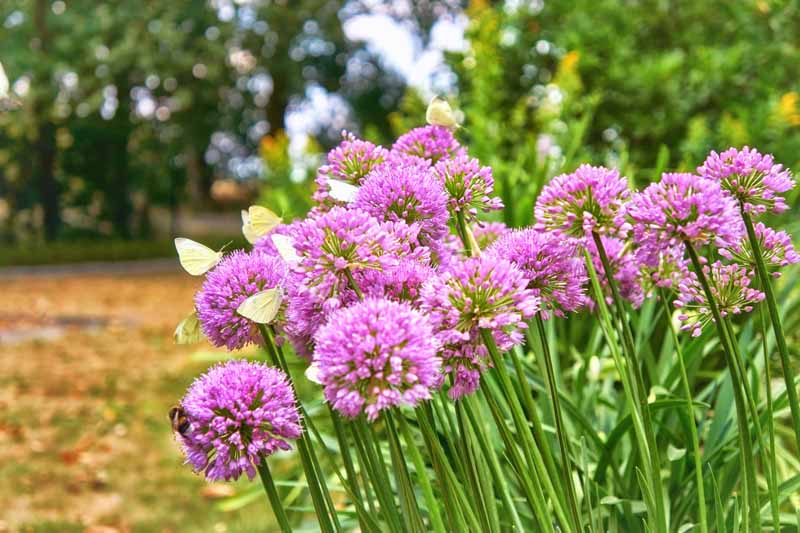Mastering the Art of Agapanthus Treatment: Vital Steps for Healthy And Balanced Development and Vibrant Blooms
In the realm of gardening, the farming of agapanthus stands as a rewarding endeavor for those who look for to support these classy blooming plants. With their striking blooms and graceful foliage, agapanthus has caught the interest of gardeners worldwide. Nevertheless, attaining ideal growth and vibrant blossoms requires a nuanced approach that incorporates various important steps. From selecting the right variety to mastering pruning techniques, the journey towards growing thriving agapanthus plants is multifaceted and holds the vital to opening the full potential of these botanical gems.

Picking the Right Agapanthus Range

When picking the ideal Agapanthus range for your yard, think about variables such as climate suitability, flower color, and growth behavior. In addition, take into consideration the climate in your region to make sure the Agapanthus variety you pick can flourish in your specific problems. Understanding the development habit of different Agapanthus ranges is important for proper positioning within your yard.
Ideal Planting Conditions
Taking into consideration the ideal ecological needs is important for effective Agapanthus farming. Agapanthus grows in well-draining dirt with a slightly acidic to neutral pH level. When planting, select a place that obtains complete sunshine to partial shade. In hotter environments, giving some mid-day shade can protect against scorching of the leaves. Agapanthus plants are sensitive to chilly temperature levels and ought to be shielded from frost throughout cold weather.
To ensure healthy and balanced growth and vibrant blossoms, plant Agapanthus light bulbs at a depth of regarding 2-4 inches and area them 8-12 inches apart. Mulching around the base of the plants helps maintain dampness and subdues weed development.
Watering and Feeding Tips
Preserving appropriate wetness degrees and giving vital nutrients are vital components in the treatment program for Agapanthus plants. When it comes to watering Agapanthus, it is essential to strike an equilibrium. These plants choose consistently moist soil however are prone to root rot if overwatered.
Fertilizing Agapanthus is vital for promoting healthy and balanced growth and prolific flowers. Use a well balanced plant food, such as a 10-10-10 formula, in the very early spring as brand-new growth emerges. By complying with these watering and fertilizing This Site pointers, you can guarantee your Agapanthus plants prosper and create dynamic, long-lasting flowers.
Trimming Methods for Agapanthus
Trimming Agapanthus plants at the suitable times and with appropriate strategies is critical for maintaining their health and wellness and promoting optimal development and flowering. The ideal time to prune Agapanthus index is in late wintertime or early springtime before brand-new development arises. Beginning by removing any kind of yellowing or dead fallen leaves near the base of the plant. Cut them as short as feasible without damaging the arising shoots.
Deadheading spent flowers can likewise redirect the plant's power right into generating even more blossoms rather than setting seeds. If you want to collect seeds for breeding, leave some blossoms to completely dry and mature on the plant.
Keep in mind to use tidy, sharp tools to make precise cuts and decrease the risk of presenting illness. Agapanthus. Normal trimming will aid maintain your Agapanthus looking neat and healthy and balanced while making certain a plentiful screen of lovely blooms
Handling Usual Insects and Conditions
After making sure proper trimming methods for Agapanthus, it is necessary to resolve common pests and conditions that can impact the wellness and vitality of these plants. Agapanthus plants are typically durable however can still come down with certain concerns. One usual insect that affects Agapanthus is the Agapanthus gall midget. This little, orange fly lays its eggs in the foliage, resulting in distorted development and flower buds that fall short to open. To battle this bug, trim and ruin any type of affected plant parts and take into consideration using insecticidal soap.
Furthermore, Agapanthus plants can endure from root rot if they are planted in badly draining soil. By being alert and taking punctual action against diseases and pests, you can help your Agapanthus plants flourish and generate vivid blossoms. Agapanthus.

Conclusion
In verdict, grasping the art of agapanthus care involves selecting the best selection, giving perfect growing problems, proper watering and fertilizing, ideal pruning techniques, and addressing common insects and conditions. By adhering to these essential actions, you can make certain healthy and balanced growth and dynamic blossoms for your agapanthus More Help plants. Keep in mind to routinely keep track of and maintain your plants to promote their total well-being and long life.
To ensure healthy and balanced growth and vivid blooms, plant Agapanthus bulbs at a depth of regarding 2-4 inches and area them 8-12 inches apart. By adhering to these watering and fertilizing suggestions, you can ensure your Agapanthus plants prosper and produce dynamic, long-lasting blooms.
One typical insect that influences Agapanthus is the Agapanthus gall midge. Furthermore, Agapanthus plants can suffer from root rot if they are planted in inadequately draining soil. By adhering to these necessary actions, you can guarantee healthy and balanced growth and vibrant flowers for your agapanthus plants.
Comments on “Common Agapanthus Issues and Just How to Solve Them”